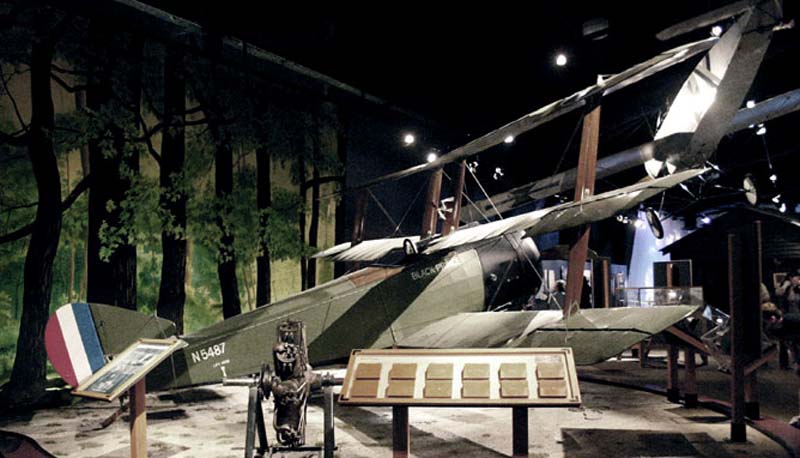| Sopwith | ||||||||||||
|
Triplane # |
||||||||||||
 |
||||||||||||
|
Photo: Robert Deering 9/3/2011 Museum of Flight King County International Airport (BFI) Seattle, Washington |
||||||||||||
|
One can't look at the Sopwith Triplane without generating a whole list of questions. Though similar to the Pup, the Triplane, of course, has three wings. German flyers who encountered "Tripes" noted a few differences between the biplanes they were used to tangling with and these new "three-wingers." Triplanes could turn around -- and bring its gun to bear -- in a startlingly short amount of time. And if things got too rough for a Triplane flyer, he went up, and up, and up! And no one could follow him.
The "Tripehound's" small-cord wings offered a good field of vision compared to biplane fighters. Structurally, the Triplane was strong enough to not have the mess of rigging seen on many other airplanes of the time. And the Tripe's maneuverability was helped by the fact that each of the plane's wings was designed with an aileron.
The Museum's aircraft, built by Carl Swanson, with a Clerget, 110 h.p. rotary engine and one .303-inch Vickers machine gun. This plane carries the markings of Canadian ace Sub-Lieutenant Mel Alexander. He was part of the famous all-Canadian "Black Flight" Naval Squadron led by Flight Commander Raymond Collishaw. In June and July of 1917, Black Flight shot down 86 enemy aircraft and lost only three flyers of their own. |
||||||||||||
|
||||||||||||
